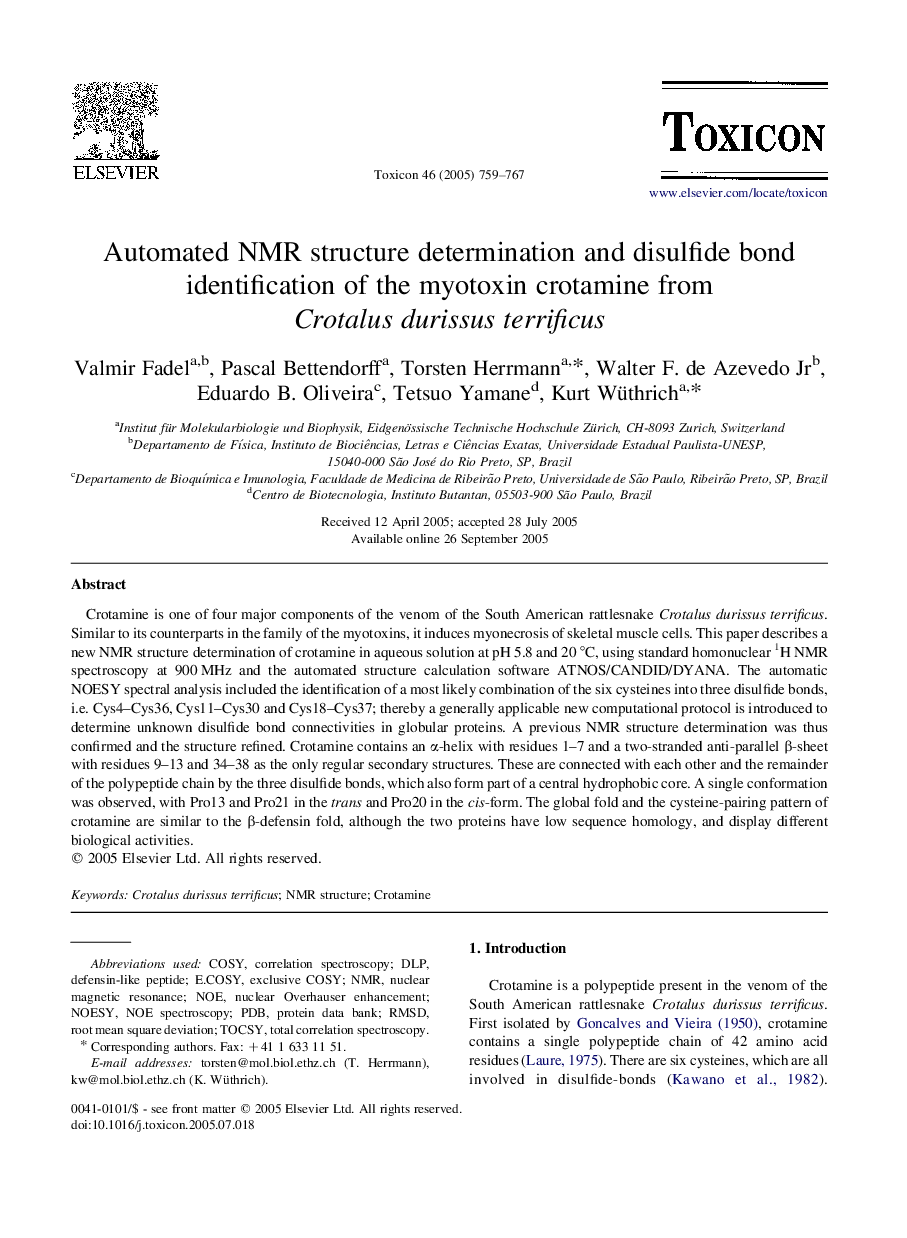| Article ID | Journal | Published Year | Pages | File Type |
|---|---|---|---|---|
| 10880309 | Toxicon | 2005 | 9 Pages |
Abstract
Crotamine is one of four major components of the venom of the South American rattlesnake Crotalus durissus terrificus. Similar to its counterparts in the family of the myotoxins, it induces myonecrosis of skeletal muscle cells. This paper describes a new NMR structure determination of crotamine in aqueous solution at pH 5.8 and 20 °C, using standard homonuclear 1H NMR spectroscopy at 900 MHz and the automated structure calculation software ATNOS/CANDID/DYANA. The automatic NOESY spectral analysis included the identification of a most likely combination of the six cysteines into three disulfide bonds, i.e. Cys4-Cys36, Cys11-Cys30 and Cys18-Cys37; thereby a generally applicable new computational protocol is introduced to determine unknown disulfide bond connectivities in globular proteins. A previous NMR structure determination was thus confirmed and the structure refined. Crotamine contains an α-helix with residues 1-7 and a two-stranded anti-parallel β-sheet with residues 9-13 and 34-38 as the only regular secondary structures. These are connected with each other and the remainder of the polypeptide chain by the three disulfide bonds, which also form part of a central hydrophobic core. A single conformation was observed, with Pro13 and Pro21 in the trans and Pro20 in the cis-form. The global fold and the cysteine-pairing pattern of crotamine are similar to the β-defensin fold, although the two proteins have low sequence homology, and display different biological activities.
Keywords
Related Topics
Life Sciences
Biochemistry, Genetics and Molecular Biology
Biochemistry, Genetics and Molecular Biology (General)
Authors
Valmir Fadel, Pascal Bettendorff, Torsten Herrmann, Walter F. de Azevedo Jr, Eduardo B. Oliveira, Tetsuo Yamane, Kurt Wüthrich,
